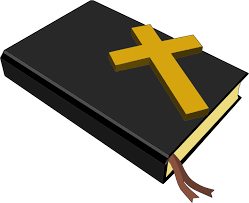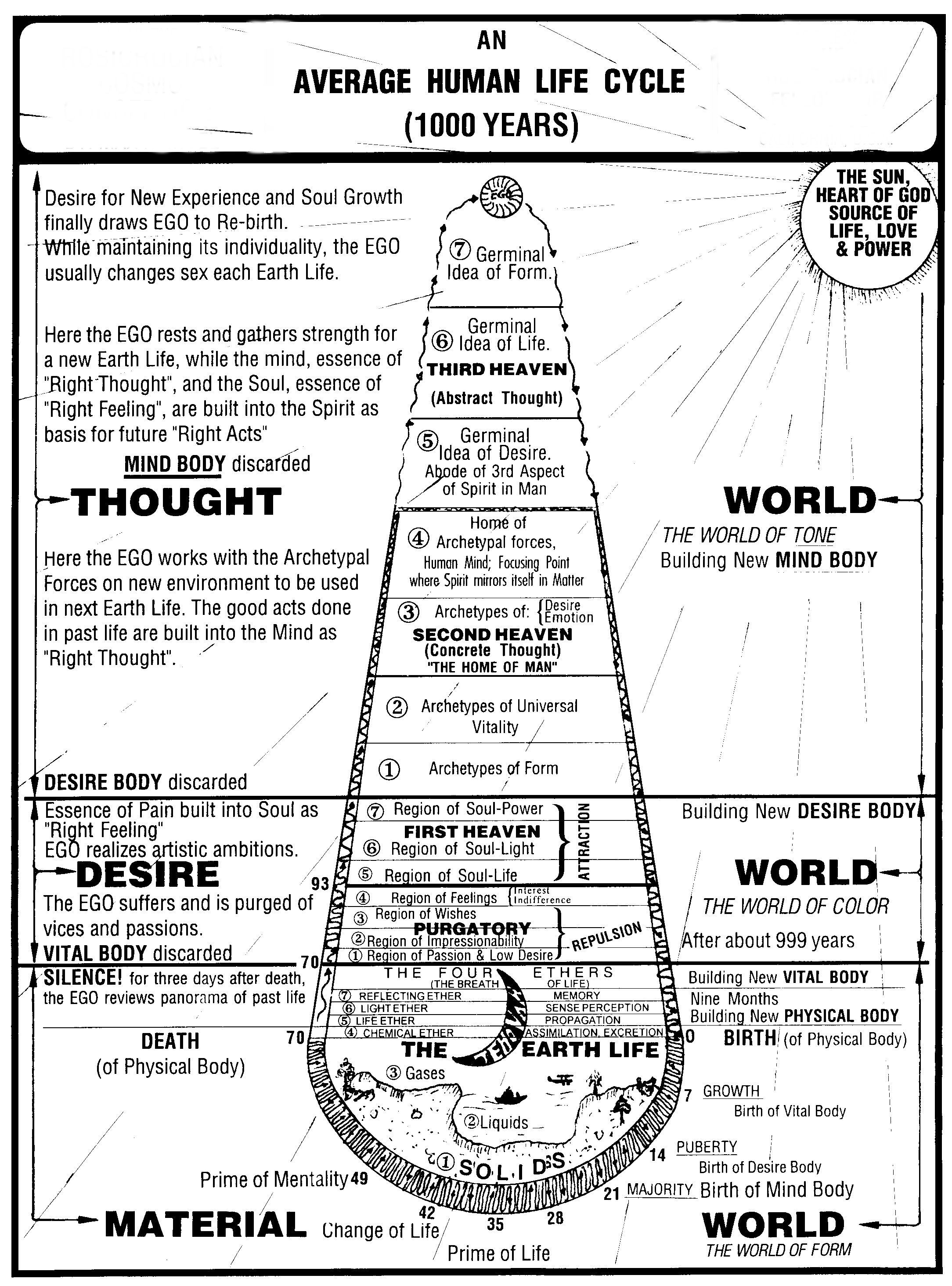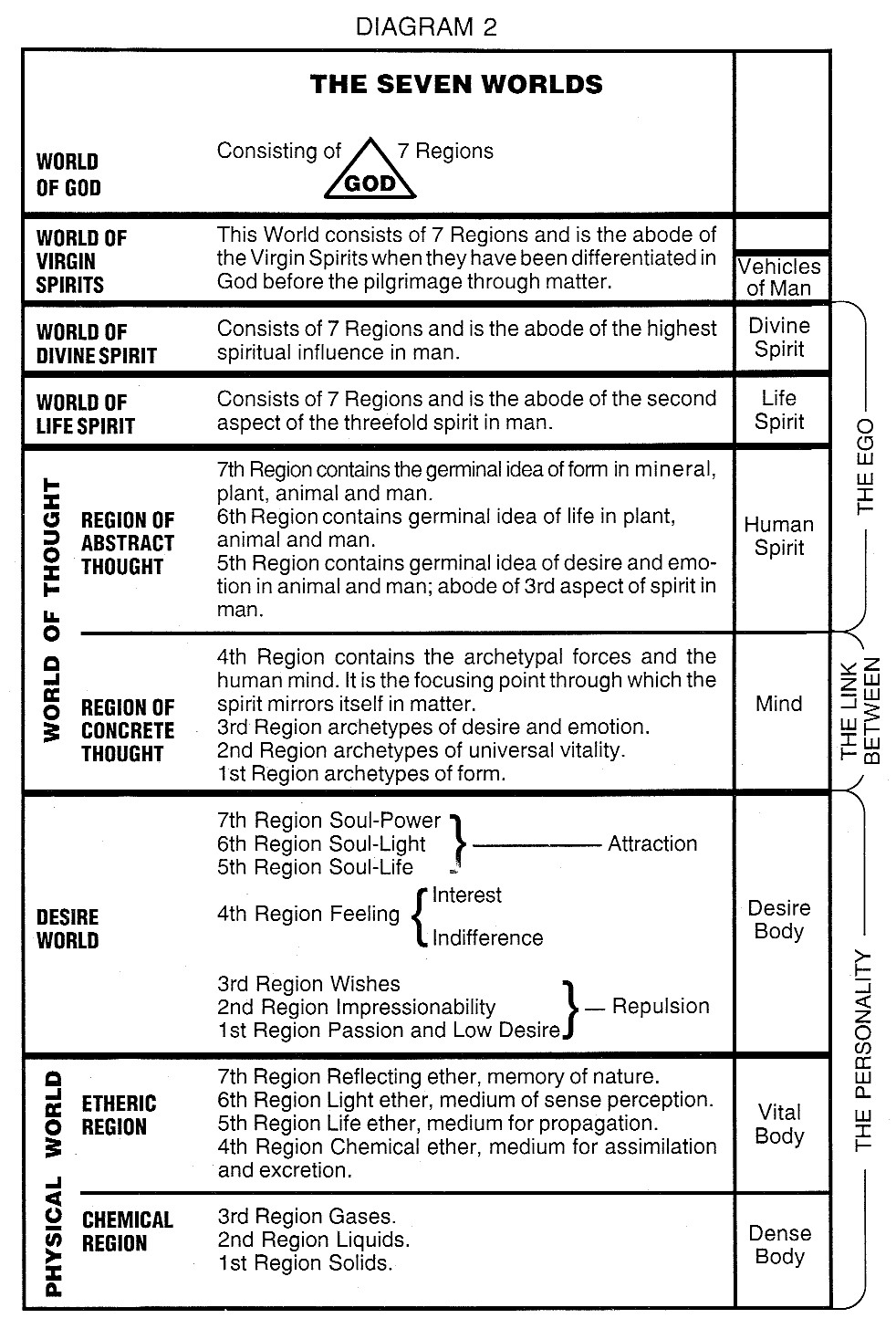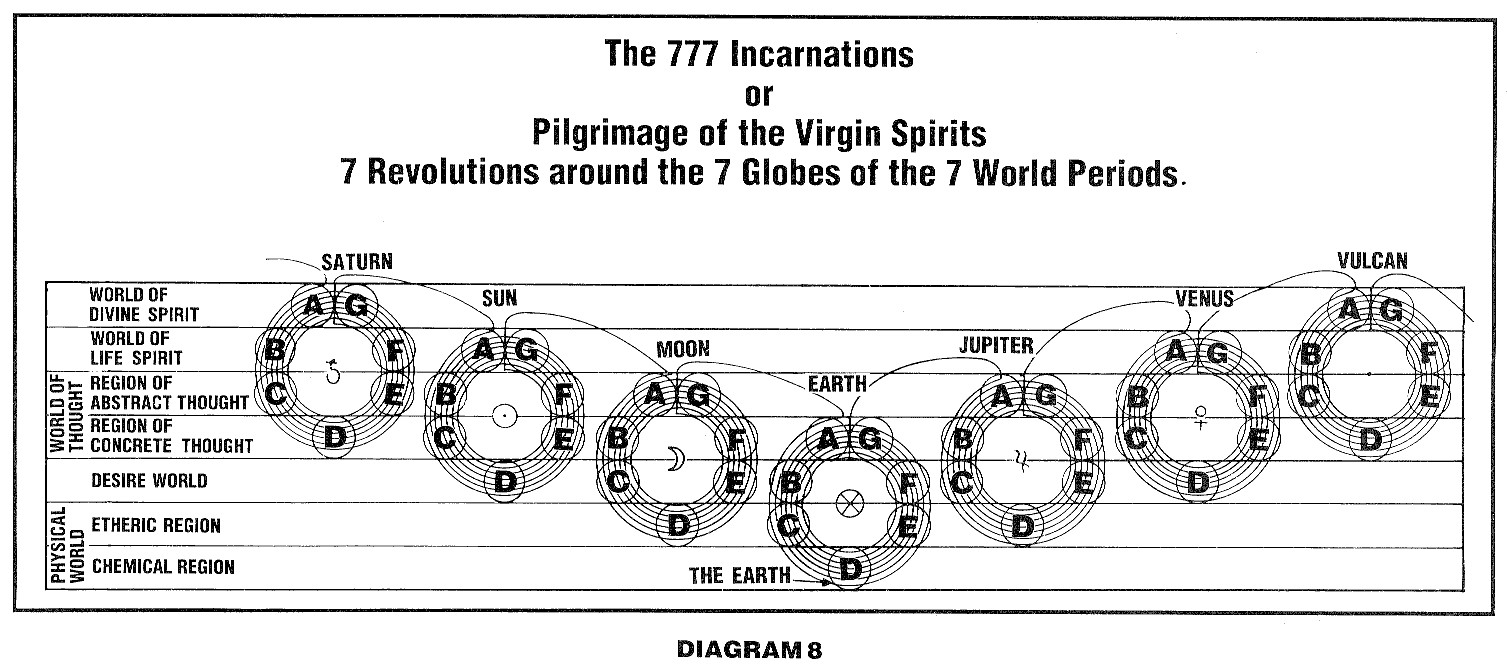
| RosicrucianU.com | ||
| Simplified Scientific Christianity |

When Moses reached the age of forty the highest positions of state were open to him. But his people needed him and to them he gave his life. He was not called to worldly glory but to humble service, and to that call he remained faithful in his days of preparation as he did through his years of performance. He delivered Israel.
Moses realizing that of himself he was nothing, and not yet fully comprehending how powerfully the forces of nature could operate through him when he worked knowingly with them toward definite conscious objectives, asked Jehovah, "Who am I, that I should go unto Pharaoh, and that I should bring forth the children of Israel out of Egypt?" To this query the voice of the Lord (Law) replied, "I will be with thee."
The voice of the Lord continues: "And this shall be a token unto thee that I have sent thee." Whoever goes forth under such high authority carries power before which the might of earthly kings is impotent, as Pharaoh learned to his sorrow. One so commissioned by the Lord knows no defeat; Holy Spirit guides his steps, and invisible Hierarchies sustain and protect him for the fulfillment of his destined task.
Moses asked the voice to identify itself so that when he came to deliver his people he could tell them by whose authority and power he was able to do so. "And God said unto Moses, I AM THAT I AM . . . say unto the children of Israel, I AM hath sent me unto you." (Exodus 3:14)
This passage serves well to emphasize the all-important fact that the Bible deals with principles rather than personalities. I AM is a declaration of conscious being. It is uttered alike by men and by gods, and links all who can affirm it in bonds of essential being.
To a material scientist the I AM is the blind urge in nature, to a religionist it is the will of God governing the universe; to an esotericist it is divine consciousness permeating all beings and all things with directive purpose and transcendent ideal. Such was the I AM that invested Moses with authority and inspired him to become the deliverer of his people.
The Christ lived in the I AM consciousness. He could, therefore, say without presumption, without apology, without violating His sense of utter humility: "I AM the way, the truth, and the life. No man cometh to the Father but by me." Other affirmations by Christ Jesus as the I AM are equally clear as to their impersonal, universal significance. For instance, "I AM ... the bright and morning star." — "I AM Alpha and Omega, the beginning and the ending. . . which is, and which was, and which is to come." — "I AM the good Shepherd." — "I AM the resurrection and the life." — "I AM the light of the world."
As man develops a higher spiritual consciousness he will use ever greater care in speech not to predicate I AM with an untrue affirmation. A living realization of this single truth has brought modern religious denominations and movements into being that have been instrumental, not only in transforming the thinking of great numbers of their followers, but in exercising a liberating influence on the consciousness of the race. Like all truths, it is susceptible of misinterpretation. By inversion it is the means whereby the powers of spirit are prostituted for personal advantage instead of liberating an Ego from limitations of the personal that it may give selfless service in furtherance of the Kingdom of Light. These "latter days" are not without I AM manifestations on both higher and lower levels of expression.
I AM is an affirmation of Being that all individualized Egos have the privilege of making. But there is a Name, unpronounceable by the masses, that penetrates yet more deeply into the heart of Reality, and it may be intoned by an initiated few. This is true in all religions. The Hindus, for instance, have their sacred AUM, the source of golden Light. Herodotus, the Grecian historian, in an account of Egyptian Initiations refers to representations made of Him "whose name they refrain from mentioning." The Zohar states that devout Jews never pronounce the name Yod-He-Vau-He — I AM THAT I AM — but substitute ADNI; that is Adonai, meaning Lord.
The name Adonai is capable of twelve transpositions, all conveying the meaning to be. It is the only word that will bear so many transpositions without its meaning being altered. They are called the twelve banners of the mighty Name and are said to rule the twelve signs of the Zodiac.
Both the Kabbala and the Zohar contain much information about the Holy Name of the Old Testament. The Zohar states that "the name of Deity which we call Jehovah is in Hebrew a name of four letters, I H V H; it is a Name of Names. He who can pronounce it causeth heaven and earth to tremble, for it is the Name that rusheth through the universe." Albert Pike, the illumined mason, says the I AM verse in Exodus contains the secret of the Lost Word in Masonry.
The Tetragrammaton — a term derived from the Greek and meaning literally four letters — is the I H V H of the Hebrews. It is the I AM THAT I AM. It is held that if the letters used in that phrase were unveiled they would reveal the past, present and future states of existence. The Letter I, or Yod, is the Ego crucified between the A or masculine principle on the one side and the M or feminine principle on the other. Astrologically, it conceals the mystery of the division of Scorpio, from which sprang the signs Virgo and Libra. It tells the story of the fall of man through generation (Scorpio) and the way of his redemption through chastity and service (Virgo).
The Tetragrammaton is, moreover, an age old symbol of the Initiate who becomes worthy to pronounce the Name after having blended the principles of Fire and Water within himself, which gives him control over these elements in his own nature. There is a rabbinical legend stating that the four letters of the sacred Name were engraved upon the rod of Moses and that in them resided his power to perform miracles. This is true in the sense that Moses possessed the power symbolized by the rod and the letters of the Tetragrammaton engraved thereon. By virtue of this attainment Moses wielded the rod of authority in majesty and with wisdom, delivering his people from bondage and enunciating the law for the Dispensation bearing his name.
According to an old tradition preserved in the Talmud, the rod of Moses had its origin in the Garden of Eden. Its legendary history is as follows:
When Adam was expelled from the garden he supported his weary frame with a branch taken from the fatal tree which had occasioned his fall. By Adam it was bequeathed to Methuselah, the son of Enoch, who transferred it to Noah, who preserved it in the Ark. It was later passed into the possession of Noah's grandson, Mizraim, who founded the city of Memphis, and he deposited it in the celebrated college there.
When Jethro was consecrated priest, and was sent from this college to become a priest of Midian, he took with him this miraculous rod. He set it up in his garden, and not being able to remove it, he was told in a vision that it would be removed by one in whose hands it would become a symbol of the glory and majesty of God. When Moses came to Jethro, one day as they walked in the garden, Moses chanced to put his hand upon the rod, and without any exertion it came out of the ground; Jethro, surprised, acquainted Moses with the history of the rod. Considering this a manifestation of God's favor and protection, Moses took the divine staff into his own possession, and with it all his miracles were performed.
The rod of power is a symbol universally applied to the creative potencies that operate in man along the vertical spine between the sacral center at the base and the head centers at its summit. This is also the Tree of Life, the magician's wand, the sword of truth. It becomes an instrument for performing miracles when the creative fire forces are conserved and transmuted into spiritual power. This, too, is the serpent fire, which, when turned earthward for gratification of sensual desire, becomes the venemous serpent that stings to death; but, when raised through aspiration, love and service, it becomes the healer of disease and the giver of life. As the Israelites learned in their wilderness wandering (barren, spiritually unenlightened condition), the serpent that crawled in the dust (misuse of the life force) and plagued them with suffering and death needed only to be raised on high and looked upon in order to restore them to well-being.
From the apocryphal Book of Jasher comes another legend about the rod of Moses. While details differ from the Talmudic version, the essential significance is the same. The Jasher account follows.
Moses was confined in a dungeon in the house of the high Ruel for ten years. Here he was sustained by Zipporah with food brought secretly day by day. At the request of Zipporah, Moses was taken out at the expiration of ten years and given a change of garments; he was also treated to fresh bread. Afterwards, as he prayed in Ruel's garden, he beheld a sapphire stick planted in the midst of the garden on which he observed engraved the Ineffable Name (I AM THAT I AM).
When he succeeded in plucking the stick from the ground, there was revealed to him all the works of God as He created the heavens and earth, the seas, rivers, animals, and men. With this stick Adam tilled the ground, and passed it in turn to Noah, Shem, Abraham, Isaac, and Jacob, who took it from Esau. From Joseph it passed into the hands of Ruel, the high priest. All the wise men tried to lift it from the ground, for only so could they win Ruel's daughter, Zipporah, "the shining one," in marriage. But they were all unsuccessful until he came who had earned the right to take it. When Ruel saw Moses with the stick in his hand, he gave him Zipporah for his wife.
Both legends stress the fact that the rod bestows miraculous power; also, that few there be who possess it. The rod is within reach of all, but only the qualified can draw it forth.
In like symbolism, Wagner presents this same idea in Die Walkure as the sword which the god Wotan had thrust deep into a tree to await the coming of the one who could extract it. Siegmund was the hero. He had learned the secret of strength and used it to bring freedom to others still held in bondage by impotence. This secret is conservation and transmutation of the life force, the Great Work. Regenerative processes by which it is accomplished are presented in countless ways throughout the entire Bible. Within every human being resides the potentialities of godhood awaiting development and upliftment by an awakened, operative I AM within.
The raising of the spinal spirit fire, through the process of purification and transmutation, spiritualizes and strengthens the will. Power is thus gained to command obedience from forces and beings in both the visible and the invisible worlds. Adam (early humanity) had such power before the Fall; since then only a few (whom we know as the Illuminati) have possessed it; in time to come, all will regain it.
The legend recounted tells of ability to peer into the Book of Nature which comes to one who, like Moses, released the power of the serpent fire — or, as the story puts it, Moses plucked the stick bearing the Ineffable Name from the ground. In Akashic Records he looked upon the processes by which worlds and all things in them came into being. This is an experience accompanying Initiation; it belongs to the early degrees of Illumination taken in all Mystery Schools. The Ego beholds, in full consciousness, the unreeling of the panorama of creative activity in the past. What an Initiate reads in Genesis is looked upon in living pictures. He recapitulates in memory all the states of his previous existence and beholds the operation of cosmic forces that have carried him through vast ages and into the present. Three Periods lie behind him. Consequently, in rituals of Initiation we read of the candidates being asleep for three days. On the fourth day — symbolizing the present Earth Period — he is awakened to self-consciousness and bidden to arise. He has been raised to a higher level of realization; he has been initiated into added mysteries of life and the processes of their unfoldment.
An account of this experience encountered by an Initiate in the Ancient Grecian Mysteries reads as follows:
For a time before the revealing of the cosmogenic drama there is silence and complete darkness. The earth was without form and void. At last the darkness slowly disappeared in a certain place, and there appeared against a dark background a fully lighted mass of white substance. This was the great cosmic egg, and it was surrounded by a sea of seeds. Thus the spirit of God moved upon the face of the waters. The dawning light simulated the breath of the Elohim who covered, warmed, protected, and incubated their creations through the power of Love. Next were seen pictures of man, animal, and plant life. The men bore implements of service and chisels of sculpture, representing thereby the work done upon earth and man by the Elohim.
— Corinne Heline

|

|

|
|
|
Contemporary Mystic Christianity |
|
|
This web page has been edited and/or excerpted from reference material, has been modified from its original version, and is in conformance with the web host's Members Terms & Conditions. This website is offered to the public by students of The Rosicrucian Teachings, and has no official affiliation with any organization. | Mobile Version | |
|